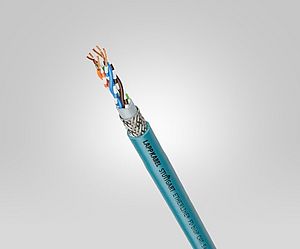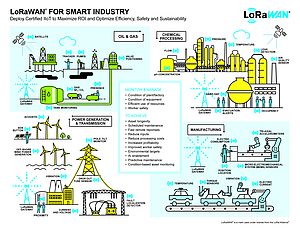Heat pumps are considered large if they exceed capacities of 100kW. They can easily reach the one to several megawatt range with the largest units providing 35MW in a single machine.
Currently available heat pump technology can provide heat up to 100°C with a spread between source and sink temperature of approx. 50 K per stage.
Using heat pumps for applications above 100°C is still a challenge. While the underlying principles are known and prototypes for these temperature levels exist, they are not yet available in standard products. The current level of research and development projects as well as increased interest by new players to engage in the segment of large heat pumps leaves room for optimism. New and improved products are expected in the market. Without existing solutions for heat pump applications for temperature levels above 150°C this segment has not been included in the current potential assessment. With this in mind, available data from Eurostat for was evaluated to determine the potential for the application of heat pumps in industry.
2012 data for EU-28 reveals, that the industry is using 3200 TWh of final energy and has a demand for heat of approx. 2000 TWh. Figure 2 shows the split of this heat demand.
This assessment reveals a practically reachable potential for heat pumps in the temperature range up to 100°C of 68 TWh, mainly in the chemical, paper, food/tobacco and wood industries (see blue shaded bars in fig. 2). Adding the sectors of hot water and space heating reveals an additional 74 TWh (see orange shaded bars in fig. 2). With technical progress, an additional potential of 32TWh in the temperature range from 100 to 150°C can be made accessible (see darkest blue bar in fig. 2). In total, 174 TWh or 8.7% of all heat demand in industry can be provided by heat pumps.
The higher temperature ranges shown in grey in the graph above remain inaccessible for heat pump technology.
Potentials for heat pump applications
The result of this assessment shows the realistic potential of heat pump applications. The technical potential is much larger, but can often not be fully used due to practical considerations. A more refined model based analysis, executed by Wolf and Blesl, comes to the conclusion that the technical potential of heat pump used in industry across the 28 EU member states is 1717 PJ (477 TWh), with only 270 (75 TWh) or 15% of it being accessible if economic and practical considerations are applied.
Thus the model based approach leads to a larger technical potential, but to a much lower economic potential.
Main factors influencing the economic perspective of heat pump operations are:
- Cost of fossil fuels
- Cost of electricity
- Interest rate
- Efficiency of the heat pump system
- Simultaneous availability of heat supply and heat demand, simultaneous demand for heating and cooling
- Investment cost differences.
Operation cost savings from heat pump use are possible, if the relative cost of fossil fuels and electricity are smaller than the efficiency of the heat pump system. With a rather distorted energy price, this is more and more difficult, as many governments recover the cost of greening the electric system via electricity cost itself. At the same time the price for fossil fuels does not reflect the negative environmental impact of its use. Thus relative cost of heat provision points in favour of fossil fuels.
Since there is a direct relation between energy demand reduction and CO2 emissions, extending the economic potential of demand reduction will also reduce CO2 emissions from the industrial sector. The study concludes a total CO2 emission reduction potential of 86,2 Mt with 21,5 Mt (25%) of it economically viable.
Obstacles, challenges and opportunities
Main obstacles limiting the use of heat pump in industry are as follows:
- Extreme requirements on a return of investment, often not more than 2 years are accepted. This is further complicated by a comparatively low price for fossil energy.
- Risk aversion, in particular vs. heat pumps which are not trusted, but perceived as a new, unproven technology.
- Limited or no availability of best practise examples that could create trust in new solutions.
- Structural barriers in the industry:
- High transaction cost for the conversion of processes, as many old processes are based on steam
- Need to integrate competences and responsibilities to realise a systems perspective in order to energetically optimise industrial processes and commercial applications
Both the energy savings and CO2 abatement potential of heat pumps in industrial applications is still largely unused. Creating more favourable political framework conditions will allow to reverse this trend. These include:
- Adding a price signal to the use of fossil fuel
- Reduce the burden from tax and levies on increasingly clean electricity
- Provide low interest rates and loan guarantees to energy efficient investments using low carbon emission technologies such as heat pumps
- Increase research and development on standardized heat pump solutions for the identified industrial sectors
- Provide more best practise examples.
There is a joint effort necessary from policy makers and industry alike to develop the technical and economic potential of heat pump applications in industry. It needs both to pull on the same string (and in the same direction) to fully unleash the potential.
By Thomas Nowak, Secretary General at European Heat Pump Association AISBL (EHPA)























































